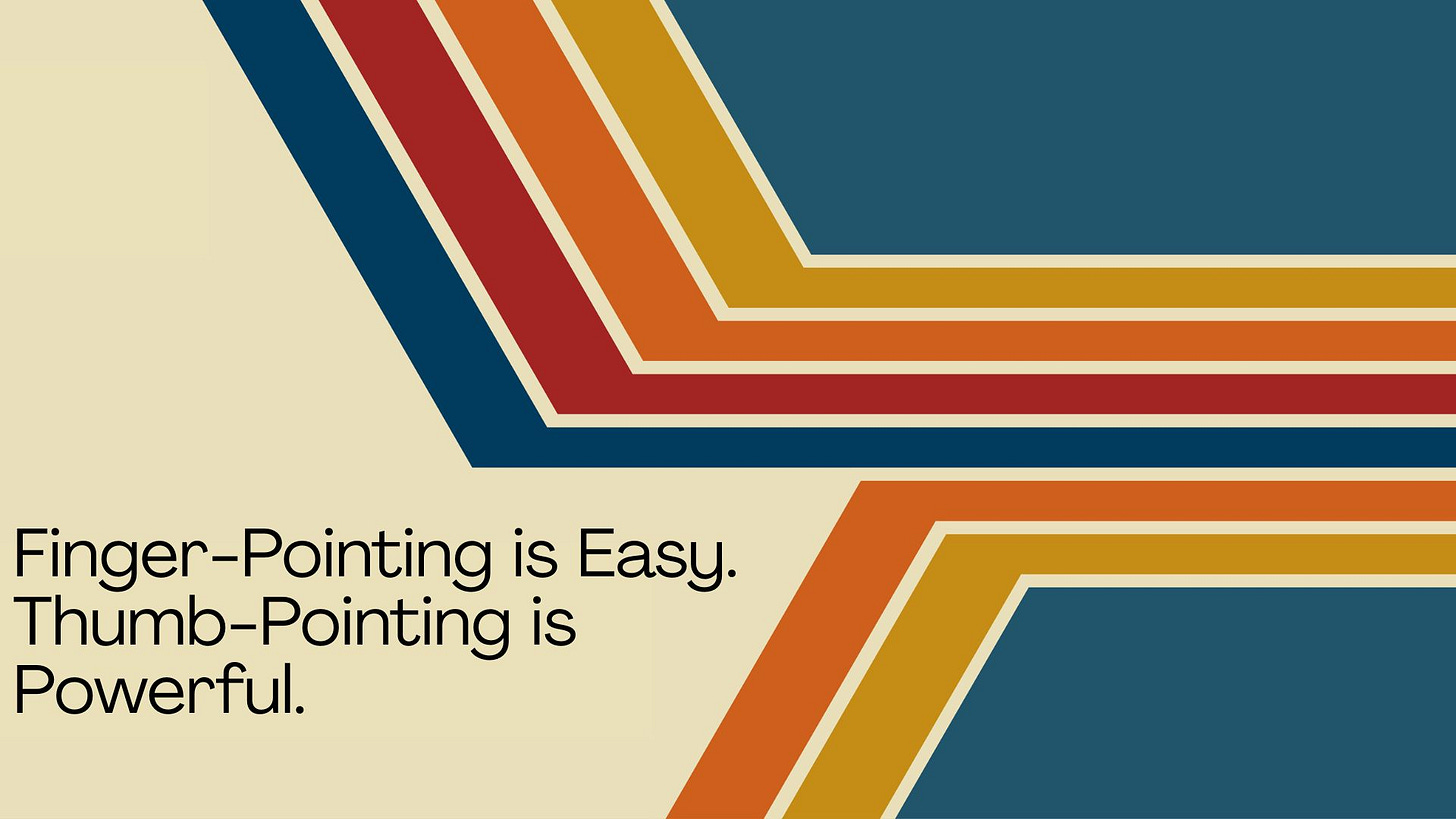Finger-Pointing is Easy. Thumb-Pointing is Powerful.
Radical ownership as the hidden edge in product leadership.
It was supposed to be a clean launch.
Design hit their deadlines. Engineering got it out the door. GTM was prepped with messaging. But when the product shipped… crickets.
Low adoption. Confused users. Frustrated internal teams.
Sales pointed at Product: “We didn’t know the positioning.”
Engineering pointed at Sales: “They rushed features with no context.”
Leadership pointed at everyone: “Why wasn’t this flagged earlier?”
In moments like this, the reflex is to point the finger.
But great product managers?
They point the thumb.
The Thumb Principle
There’s a quiet kind of leadership in asking:
“What did I miss?”
Not as a scapegoat.
Not to absorb blame for others.
But because the best PMs understand a foundational truth:
If you own the outcome, you own the inputs.
That’s the thumb principle.
It’s not about taking blame—it’s about taking responsibility.
Responsibility for clarity. For alignment. For blind spots. For missed context.
Because no matter who “caused” the failure, the PM is uniquely positioned to prevent it.
Let’s take a few classic examples:
1. Engineering misses a deadline.
Finger: “They didn’t scope properly.”
Thumb: “Did I define the problem clearly? Did we de-risk the plan enough?”
2. Users are confused by a new feature.
Finger: “Design didn’t follow the brief.”
Thumb: “Did I validate the experience? Did I test assumptions early enough?”
3. Stakeholders override the roadmap.
Finger: “Leadership keeps changing priorities.”
Thumb: “Did I communicate tradeoffs clearly? Did I earn trust in the plan?”
It’s not about excusing others.
It’s about examining the system through your own lens of control—and leading the fix.
Why Pointing the Thumb Builds Influence
Ironically, the fastest way to earn respect is to own the hard parts.
When you point the thumb:
Engineering sees you as someone who takes the heat, not just the credit.
Leadership starts looping you in earlier because they trust your judgment.
Cross-functional teams align faster—because you show, not just tell.
Radical ownership creates gravitational pull.
Thumb-First Habits of Great PMs
Here’s how top product managers embed this mindset daily:
Start retros with: “Here’s where I could’ve been clearer.”
In roadblocks, ask: “What signal did I miss?”
Write postmortems that highlight your missteps before others’.
Default to curiosity over criticism.
When a feature succeeds, lift others. When it fails, start with you.
This doesn’t mean being a martyr.
It means being a multiplier.



